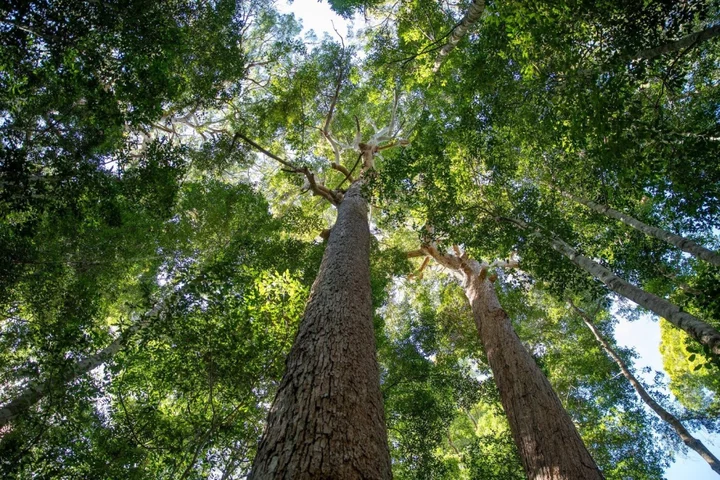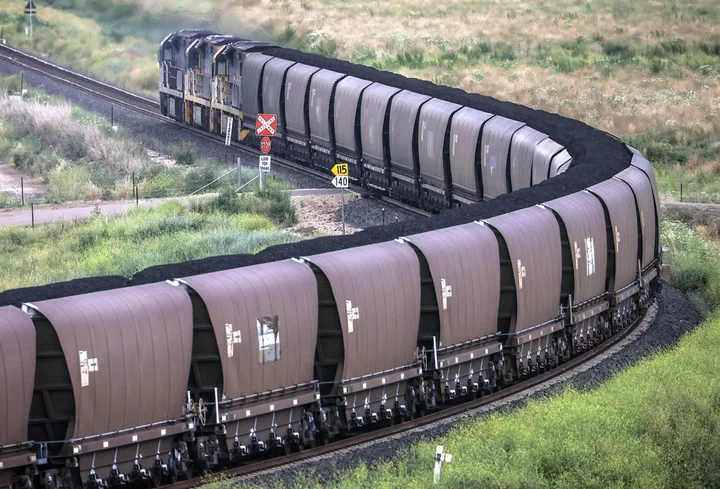In the sun-drenched land of Australia, where vibrant ecosystems once thrived, a symphony of natural wonder and ecological balance painted the landscape. The eucalyptus-scented breeze, the rustle of leaves, and the gentle gaze of koalas perched high in the trees — all once stood as testaments to the beauty and resilience of Australia's forests. But the echoes of deforestation, the ravages of climate change, and the scars of ferocious wildfires have left a profound impact, challenging the very fabric of these precious ecosystems.
These State Forests are located in Gumbaynggirr country in New South Wales, Australia. The continued logging of these natural resources throughout the eastern forests of Australia serve as a signal for increased awareness and an opportunity for collective action.
Here we take a closer look at what's at stake and how we can collectively address this crucial issue. It is a chance for change, before the impacts become irreversible. A chance that will ensure a sustainable future for both our environment and the communities that rely on it..
The state of logging: separating fact from fiction
Credit: HPBefore the 1970s mature trees were harvested from State Forests in a more sustainable manner. Men with bow saws set out to carefully select specific trees, minimising damage to the surrounding environment — a task once essential for sheltering our growing population. Before the technology boom, we collaborated with the land, taking only what was necessary to build and sustain our community.
Today, the logging landscape has changed. A technologically evolved society ushered in a transformation in the logging industry. The days of hand tools have given way to heavy machinery that tears through the landscape in pursuit of trees. Vast hectares are now stripped down to bare soil. These 40-tonne machines compact the dry ground, hindering the forest's natural growth, healing and regeneration.
A common misconception prevails: that mature timber serves high-value purposes for homes and shelters. In reality, these century-old trees are relegated to "low-grade materials." They're more likely to become wood chips, pallets, and even firewood. This prompts a crucial question: Why do we permit this depletion of our valued ecosystem when sustainable tree farming offers a viable and eco-friendly alternative?
Money doesn't grow on trees
Credit: HPLogging has consequences beyond the environment. It affects both local wildlife and carbon stores in these ancient forests.
There is also the unseen financial burden carried by Australians through taxes. According to the NSW Forestry Corporation's (2021-22) annual report, logging native forests not only threatens species on the brink of extinction but also costs taxpayers millions. The report reveals NSW taxpayers unknowingly fund the felling of forests the public wishes to protect, making this practice not only environmentally but also economically unsustainable.
In the 2020-21 fiscal year, the native forestry division of the NSW Government's logging operations faced a substantial $20 million loss, translating to a $441 per-hectare charge on taxpayers for logging essential native forests. It also exposed that the Forestry Corporation has run as a loss-making business unit for over a decade. The industry relies on the lucrative and more sustainable plantation sector to offset these losses.
Employment becomes a point of contention from the logging industry. Its advocates suggest that without it, livelihoods and the economy will suffer. But the forestry and logging sector plays a relatively minor role in the Australian job market. Those employed in forestry and logging within NSW representing less than 0.1%,of the total workforce, or just over 1,000 workers outlined by the WWF commissioned Frontier Economics report.
The potential job losses anticipated following the end of deforestation could be mitigated by a thriving tourism industry. The Great Koala National Park offers the potential for nature-based tourism earnings to exceed any losses incurred.
Saving our huggable heroes
Credit: PexelsNestled within Australia's diverse landscapes stands a treasured emblem of its natural beauty: our beloved koala. But these gentle creatures face an uphill battle against habitat loss, disease, and shrinking food sources. The urgency to secure their future compels us to take a stand and ensure the preservation of these remarkable animals, including the ecosystems they inhabit.
The vision of The Great Australian Koala Park embodies comprehensive conservation. The Great Koala National Park would be the world’s first national park dedicated to protecting koalas. The project seeks not only to safeguard existing koala habitats but also to restore and expand these vital areas, ensuring the long-term survival of these iconic species.
Preserving koala habitats goes beyond their survival; it nurtures diverse ecosystems. Eucalyptus forests, which are vital for these marsupials, create complex habitats supporting various life forms. These forests are more than koala homes; they're essential water catchments and vital carbon stores, playing a huge role in the fight against climate change.
This initiative also aims to protect various endangered species. It includes species that rely on old-growth and hollow trees, like yellow-bellied gliders, greater gliders, and glossy black cockatoos. Stopping logging in this area sparks forest renewal, enabling koalas and native flora and fauna to thrive and contribute to the ecosystem's rejuvenation process.
Plus, the potential economic impact is noteworthy, with nature-based tourism emerging as a multi-billion dollar industry in NSW. Destination NSW has committed substantial support to this burgeoning industry. Granting $3.5 million in the 2022-2023 period to foster this growing sector. The financial benefits clearly outweigh taxpayer-funded logging practices in the region.
How you can make a difference?
Credit: HPWhen it comes to preserving Australia's natural wonders, everyone can contribute in meaningful ways. Raising awareness and engaging in conversations about the importance of conservation can spark positive and real change.
Practicing responsible tourism and embracing eco-friendly habits can also make a notable impact. By staying on designated paths, minimising waste, and choosing eco-conscious travel options, you can help protect these fragile ecosystems. Through supporting sustainable policies, such as reducing plastic use and backing wildlife-friendly products, simple actions can go a long way to aiding in conservation of the environment.
Taking action together now is crucial, and supporting initiatives like the Great Australian Koala Park is a powerful way we can make an impact. Donating, volunteering or becoming a sponsor all directly contributes to the cause. When you visit their website, you'll discover a range of ways to engage and help spread the reach of this initiative.
As we stand at this crossroads, the choice is clear: embrace sustainable practices and protect our natural treasures. Together we can ensure a future where both wildlife and humans can thrive.
Together, HP and WWF are harnessing the power of forests to achieve ambitious sustainability goals, benefit climate and biodiversity, and produce meaningful results for our planet and all who live here. You can learn more about WWF’s partnership with HP here.









